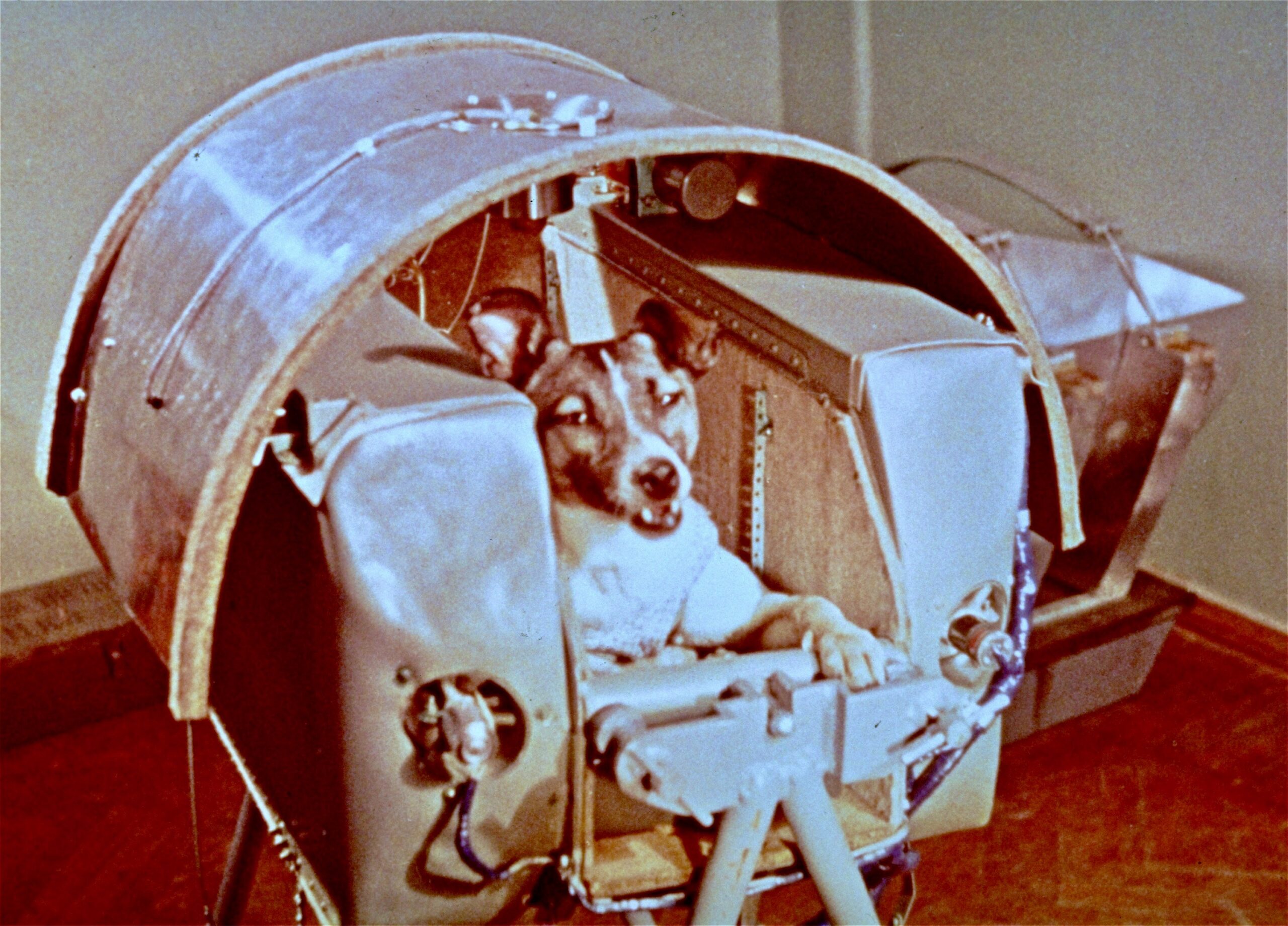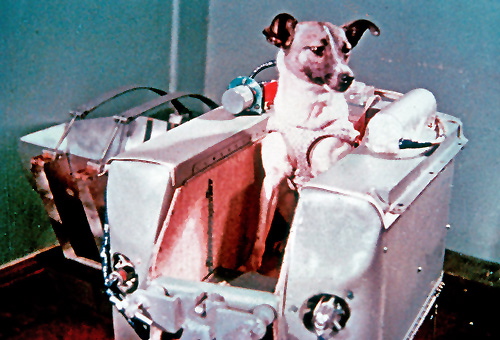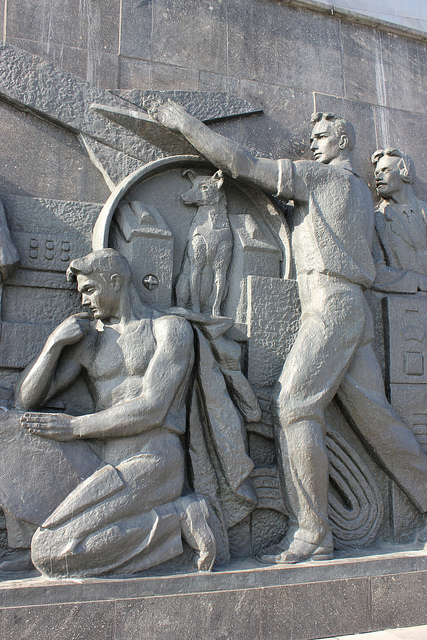
3 November 1957: Laika, a 3-year-old female dog, died in Earth orbit, confined in a small capsule named Sputnik 2. The cause of her death has been variously reported as euthanasia or oxygen starvation, but recent reports state that she died from overheating when the satellite’s cooling system failed.
Laika was a stray dog found on the streets of Moscow. She was trained to accept progressively smaller cages for up to 20 days at a time, and to eat a gelatinous food. She was placed in a centrifuge to expose her to high accelerations. Finally unable to move because of confinement, her normal bodily functions began to deteriorate.
Two days before being launched into orbit, Laika was placed inside her space capsule. The temperatures at the launch site were extremely cold.

Sputnik 2 was launched at 0230 UTC, 3 November 1957. During the launch Laika’s respiration increased to four times normal and her heart rate went up to 240 beats per minute. After reaching orbit, the capsule’s cooling system was unable to control the rising temperature, which soon reached 104 °F. (40 °C.). Telemetry indicated that the dog was under high stress. During the fourth orbit, Laika died.
The Soviet space capsule’s life support system was completely inadequate. The conditions which Laika was exposed to during her training and actual space flight were inhumane. There was no means to return her safely to Earth.
In 2008, Russia unveiled a statue of Laika at Star City.
Oleg Gazenko, one of the scientists responsible for her suffering and death said, “The more time passes, the more I’m sorry about it. We shouldn’t have done it. . . We did not learn enough from this mission to justify the death of the dog.”
© 2016, Bryan R. Swopes